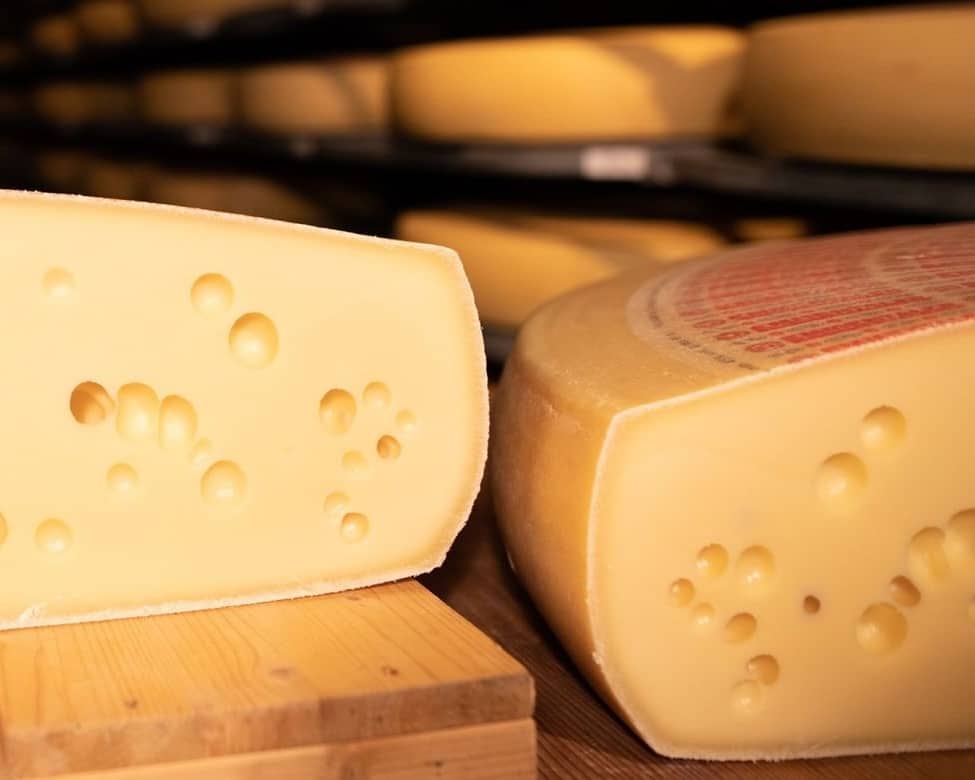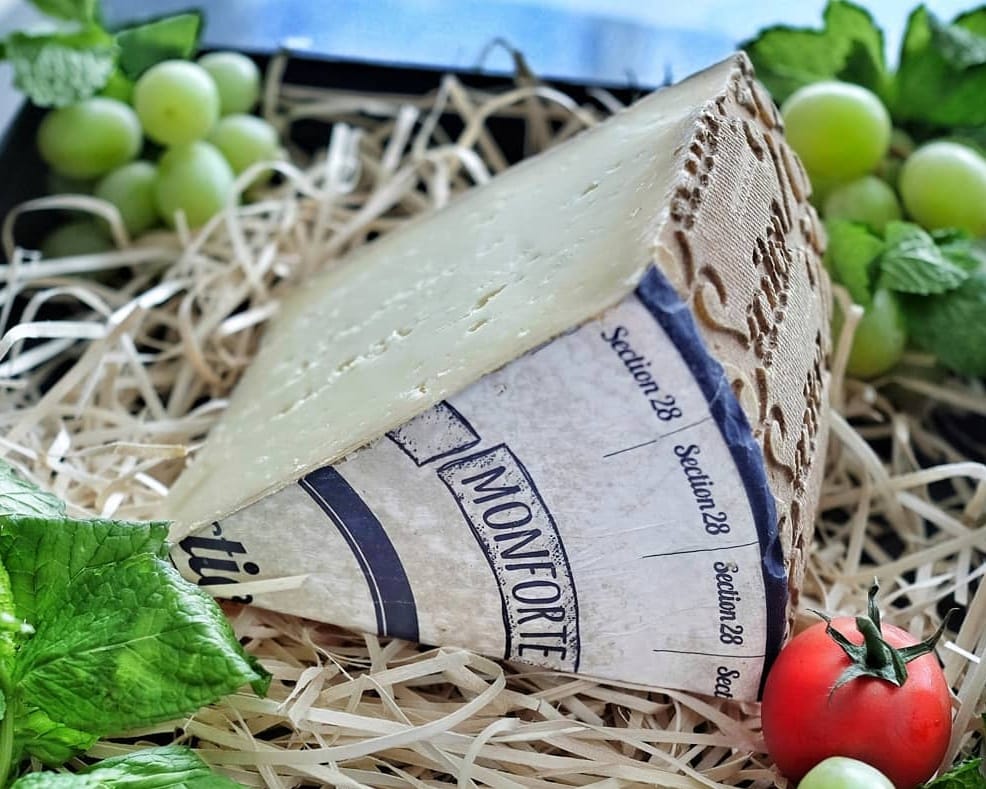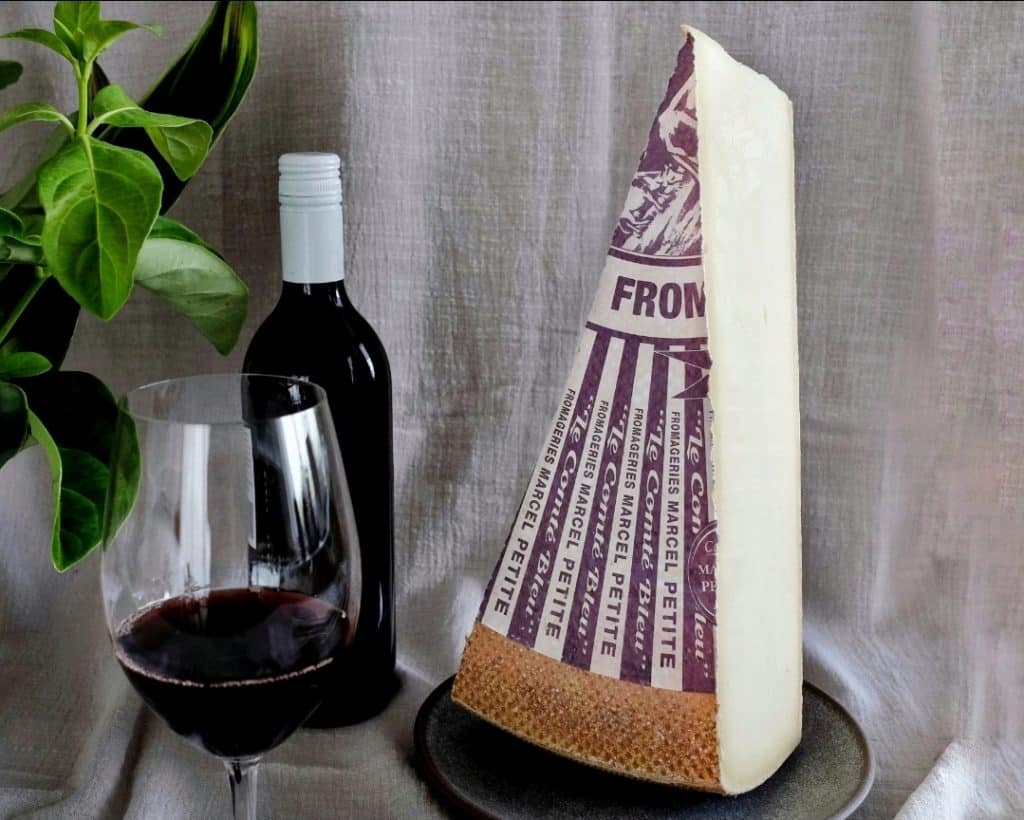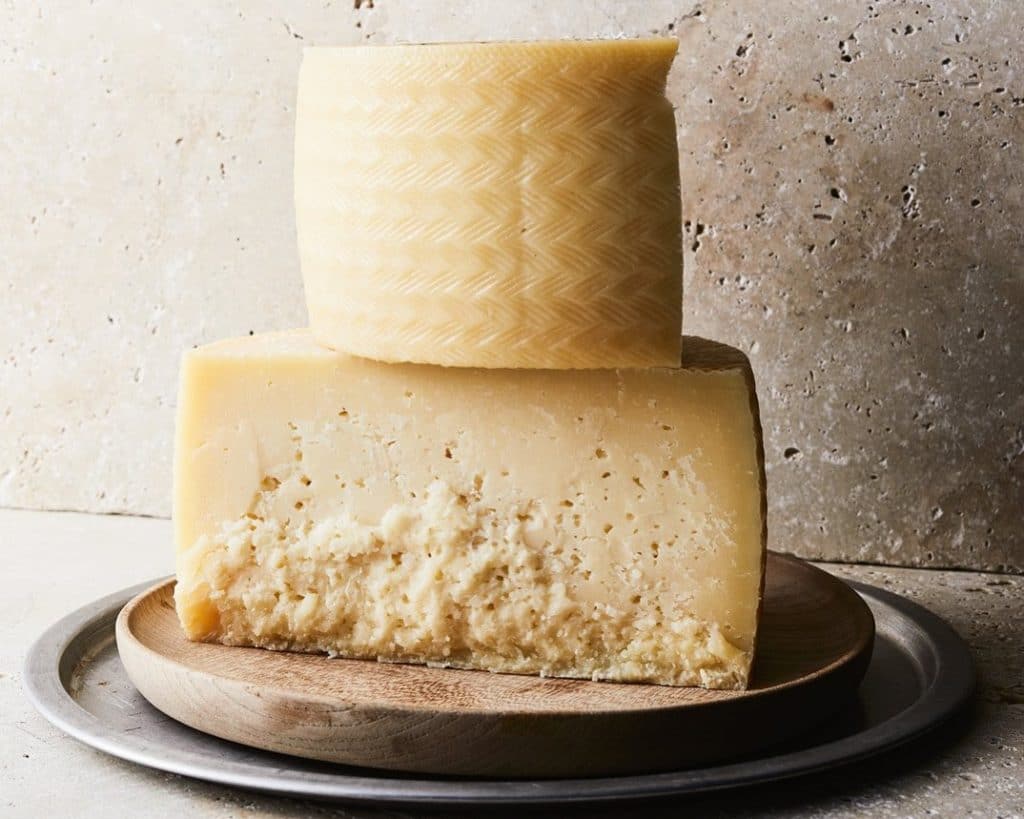When we think of Swiss Cheese, most of us picture a yellow cheese with large eyes (holes). While there is indeed a popular American deli cheese that bears this name, the OG Swiss Cheese is actually one called Emmentaler. Read on to learn about its history, production and tasting guide.

What is Emmentaler?
Emmentaler is a famous semi-hard Swiss cheese that is instantly recognisable due to its large size and spattering of eyes (holes).
When most people think of Swiss cheese with holes, this is the one they picture. While there are other very popular Swiss cheeses such as Gruyère and Appenzeller, there is something truly iconic about this huge, holey cheese.
In the valley of River Emme
Actually, this traditional Swiss cheese owes its name to its region of origin, the valley of the River Emme in the Bern canton. In this picturesque location, records of cheesemaking date back to the 13th century.
Presently, Emmentaler is made in around 110 village creameries. Significantly, the AOP dictates that the artisans have to use fresh, untreated milk.
How Emmentaler is made
It takes around 12 litres of milk to make 1 kg of this cheese. Once the cheesemaker has transferred fresh milk to copper vats, they add natural whey, rennet and three types of bacteria.
The most significant one is Propionibacterium freudenreichii which is responsible for the eye formation in the cheese. Afterwards, they separate the curd, place it in moulds and drain the excess whey. At this point, the wheels are brined and sent to maturation rooms.
Over the next 2 months, the cheese will mature at warm temperatures to encourage the formation of the eyes.
What it tastes like
Wheels of Emmentaler have a diameter of 80 to 100 cm and weigh up to 120 kg. Effectively, the cheeses are released for consumption at different ages.
At 4 months, the young cheese is mild and nutty. By 8 months (called Réserve), it becomes much fruitier. Finally, at 12 months, it develops a full-flavoured complexity and a crumblier texture.
How to serve Emmentaler
Usually, Emmentaler is enjoyed fresh as chunks or slices in a sandwich or on a salad. However, it truly comes into its own when melted in gratins or a fondue.
As a matter of fact, the classic fondue mix is composed of Emmentaler, Gruyère and Vacherin Fribourgeois.
Substitutes for Emmentaler
There are a number of cheeses made in Europe that are inspired by Emmentaler. E.g. Emmental de Savoie from France and Allgäuer Emmentaler from Germany.
In addition to those, Gruyère can be a suitable alternative if you are after a bit more bite.
Thank you for reading
Thank you for reading this post about yet another amazing artisanal cheese. Have you tried this cheese before? Drop us a comment below with your thoughts.
If you enjoy learning about new cheeses, you can subscribe to our newsletter below. You will hear from us about once a week as we share new cheese profiles with you.
Finally, keep scrolling to find some more cheeses and recipes that have been recommended for you. Keep it cheesy!




Do you use animal rennet in your cheeses